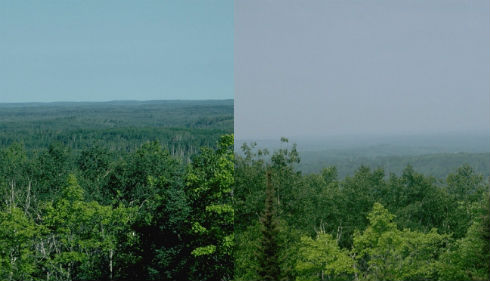
Reduced visibility in federally-protected areas in northern Minnesota and Lake Superior was the subject of a legal settlement reached last week by the U.S. Environmental Protection Agency and environmental groups.
Xcel Energy’s largest power plant, the Sherco facility 45 miles north of the Twin Cities, contributes to haze in Voyageurs and Isle Royale National Parks and the Boundary Waters Canoe Area Wilderness, all of which are required to have the most pristine air in the nation.
Reducing the haze would be a costly project, requiring $350 million in emissions controls on two of the plant’s units, which were built in the 1970s. An attorney for the Minnesota Center for Environmental Advocacy (MCEA), which sued the EPA to require the agency to assess the issue, said it could make more sense for Xcel to retire the coal-burning units and develop more clean energy production.
“It is an expensive technology. So you get to the point of ‘Do we want to make the investment in these old plants or is it time to look at retiring them?'” Kevin Reuther told the Star Tribune.
The legal settlement means that the EPA will issue a proposal by February 27, 2015, to address the emissions. It is required to finalize the plan by next August. According to a MCEA news release (PDF), actions could include requiring improved emissions controls, or disagreeing with a National Park Service finding from 2009 that the plant is contributing to haze in the region, or adopting a “weak” state plan that wouldn’t require implementing the best available technology.
Xcel Energy issued a written statement in response to the agreement expressing disappointment. MPR News reports that company officials said in the statement, “Xcel Energy has invested, and will continue to invest, in clean energy strategies that protect the environment, improve the electricity system and provide value to our customers.”

